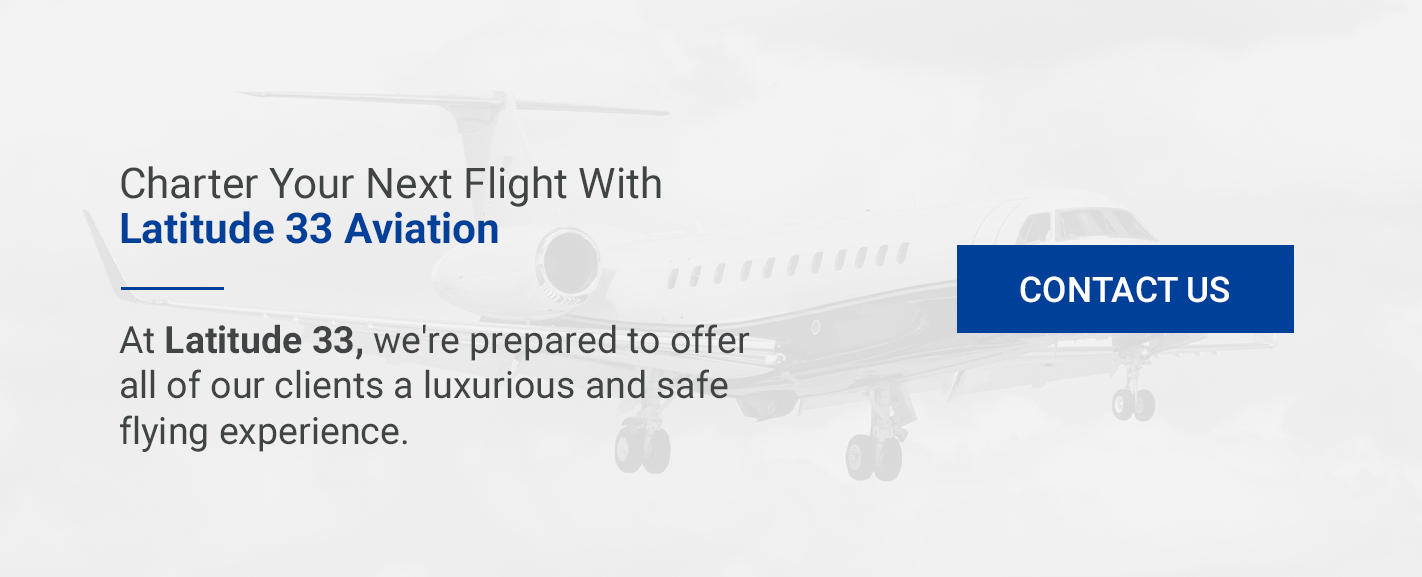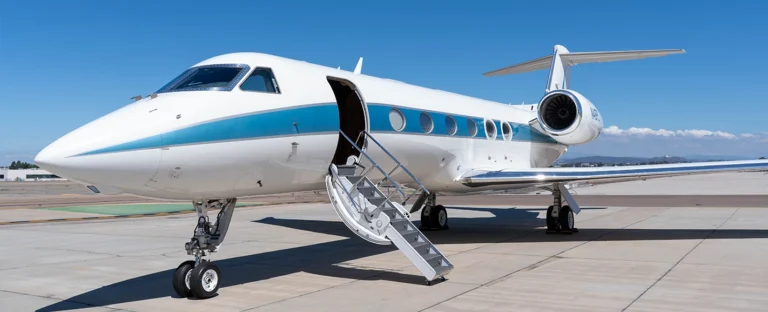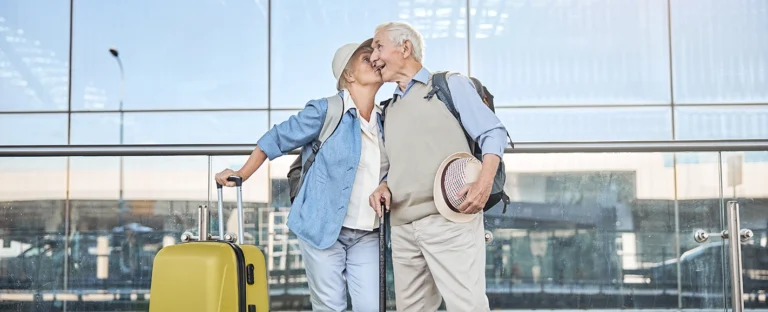While the COVID-19 pandemic may still present some challenges to air travel, the effects in 2024 are significantly less severe. The private aviation industry is now shifting its focus to new areas of growth, namely green initiatives, on-demand flights, and travel to remote destinations. These trends will set a precedent for 2024 as many regular commercial and private flyers continue their regular aviation routes.
If you’re interested in flying private, you may want to know more about how these trends impact current aviation processes. Learn how air travel trends have changed since the pandemic and how these shifts could affect the private jet market.
The Future of Private Jet Travel in 2024
The attractiveness of private jet travel has led to many private jet charter industry changes. These changes have affected both private jet owners and charter clients. Many private jet owners have invested more in fuel-efficient aircraft and upgraded digital technology. Those in the private aviation industry also have seen more first-time flyers and clients traveling with their pets and children.
In 2020, many travelers prized private jets for their privacy and ability to reduce contact with other flyers. In 2024, this trend will continue, as private aviation allows for small flight capacities. In addition to privacy, there are many evergreen benefits that private jet travel customers can harness. For example, private and corporate aviation companies provide a diverse set of clients, from corporate workers to families, with faster travel and a more luxurious experience.
If you are interested in the private aviation market, here are some of the top private jet trends expected for the rest of 2024.
1. Flying On-Demand
An emerging trend in 2024 is on-demand private jet services. By requesting a private flight from a private jet charter, travelers enjoy enhanced flexibility without the costs and responsibilities of owning their own jet.
The concept of on-demand flights is similar to ride-booking services. A private jet charter company will feature a range finder tool on its website or app, allowing the customer to select their starting location and compare aircraft types to find the best fit. Then, they can contact the company and quickly set up their charter details.
Similarly, empty-leg charter flights are becoming a more popular choice, allowing fliers to find a specific route that suits their needs. In some cases, they can hop on the flight in just a few hours from booking it.
2. Alternative Private Aircraft Options
In the past, flying private meant traveling via a jet. While jets are still the most popular option, there are now several other private aircraft types available, making this kind of travel more convenient and cost-effective than ever before. For example, those flying private might charter or invest in:
- Turboprops: These mid-sized aircraft use a gas turbine engine to propel the propeller. They are slightly slower than traditional jet engines yet more fuel efficient.
- Very light jets: While these jets have slightly smaller engines than conventional jet engines, they are an increasingly popular choice due to their speed and fuel efficiency.
- Light jets: These aircraft offer the best of both worlds — increased space and fuel efficiency. As most models accommodate up to nine passengers, they’re an economic choice for flying small corporate teams to international head offices.
3. More First-Time Flyers
Since there’s a chance to bring in flyers who aren’t used to flying private, the private jet charter industry will continue to see greater marketing efforts geared toward these potential customers. This new customer base comes from those who regularly fly first-class or business class. While previous marketing efforts focused on the luxurious experience and faster flights, operators are now appealing to potential flyers by continuing to highlight the increased safety and hygiene of private jets.
In addition to safety, the private jet industry can focus on the convenience of the boarding process. Instead of waiting in lines, most passengers drive right up alongside their private jet charter and board the aircraft upon arrival. As the jet is waiting on the passenger, it can usually depart soon after they have boarded. Otherwise, flyers can wait at private facilities with fast Wi-Fi, workstations, and refreshments, so they can make the most of their time.
4. Use of Digital Technology
Corporate aviation has been implementing more advanced digital technology in their facilities and private jets for a while now to improve the experience of flyers. For example, digital tech like in-flight Wi-Fi is quite popular as it allows passengers to do work or unwind during the flight. While the increase of digitization may have been introduced out of safety concerns, it remains because of its enhanced convenience. Reducing the number of touchpoints enables passengers to breeze through key steps, like placing a charter flight, checking in, paying, boarding, and disembarking.
To attract flyers and give them more peace of mind while flying, it’s likely the private jet industry will see an increase in a few key pieces of digital technology. By providing passengers with real-time updates about their flight and the conditions at their destination, companies deliver a better user experience. In addition, companies can make the buying process easier and safer in their facilities and on jets through the use of technology with contactless payment options.
5. More Routes to Eliminate Connecting Flights
Passengers catching connecting flights need to pass through terminals, adding additional time to a trip. Private operators have greater flexibility in their ability to reduce connecting flights, helping to make the travel experience shorter and easier.
While commercial flights often need connecting flights to facilitate the needs of thousands of passengers, private aircraft can fly into smaller airports in remote locations that commercial airlines may not be able to reach. This allows private aircraft to fly direct routes to a passenger’s destination of choice.
Private jet operators will continue to maximize their operations to increase flights to remote destinations. Operators can change their routes to reduce any need for stops or connecting flights. All of these offerings can appeal to people who regularly fly commercial but want to reduce their need for connecting flights.
6. Sustainable Aviation Fuels
Discussion of carbon emissions is often found across private jet charter news. In light of rising concerns surrounding climate change, sustainable aviation fuels (SAFs) have become more prevalent. Research by McKinsey found that the majority of consumers prefer buying from or working with companies that prioritize sustainability. Private jets employing SAFs can appeal to these greater demands for ethical and environmentally responsible products or services.
When compared to fossil jet fuels, experts see SAFs as a clean substitute. SAFs come from sustainable sources, unlike petroleum-based fossil fuels. Since these fuels offer a more environmentally friendly option than petroleum-based ones, airlines can use them to attract customers interested in sustainability and social responsibility. Customers with personal sustainability goals will be much more attracted to taking private jets running on SAFs rather than commercial flights fueled by petroleum.
Besides attracting flyers with sustainability concerns, operators that switch to SAF fuels in 2024 can stay ahead of potential regulations. As fossil fuels fall out of favor, commercial and private aircraft will face public pressure, and possibly regulation, concerning the use of fossil fuels. If an operator gets ahead of the curve now, they can set up the needed relationships with SAF companies to supply their fleet and avoid falling behind other forward-thinking businesses.
7. Younger Passengers and Pets
While some business aviation has slowed due to the reliance on remote meetings, leisure travel is in full swing. Families with children and pets are expected to continue to use charter flights throughout 2024 and beyond. Due to this trend, private jet operators have begun to offer greater accommodations for pets and children.
To appeal to families with small children, operators outfit their planes with booster seats and sleeping areas where a child can nap comfortably. Private jets also invest in on-board entertainment systems designed for children to help them stay occupied on a long flight. Additionally, many private jets also offer toys and books for children to play with or read while flying.
Forward-looking operators also store refreshments that are healthy and appropriate for children. Private jet staff should be trained to handle milk and baby food as well, storing it in appropriate locations that are easy for parents to access while on flight. Private jet travel can offer greater flexibility for parents who need to bring medications on board that might be subject to liquid limits and other restrictions on commercial flights.
8. Managing Costs
Operators and flyers in the private jet charter industry are both going to be looking for ways to manage rising costs. Limited capacity based on new charter clients entering the market and declining private aircraft manufacturing over several years has placed pressure on the overall availability of flight options.
Although costs have increased due to the low supply and high demand for private travel, flyers can take certain measures to manage the cost of their flight. Traveling on off-peak hours and picking up an empty-leg flight are just two ways travelers can reduce their costs on private flights.
Of course, private jet owners still have to deal with several costs related to the operation of their jets, such as fuel and insurance. To remain profitable and provide more affordable prices to customers, jet owners will need to source parts and maintenance services at a lower cost.
As a result, the industry will likely see jet owners searching out cost-efficient suppliers offering high-quality products and services. Brokers and aircraft managers can help set up affordable flights for their clients by helping them locate the right airports, supplies, and availability.
9. Additional Sanitation Efforts
The pandemic highlighted the need for stricter sanitation, and this trend has remained prevalent ever since. Private aviation companies want to keep their passengers safe and have placed a greater focus on sanitation regulations. By nature, private jets are much easier to keep clean, with fewer passengers to account for and more space to maintain social distancing while on board. Expect to see corporate aviation companies continue to showcase the ease of social distancing while on their flights.
Besides allowing passengers to fly only with their closest friends or family, private jet charter companies are likely to continue maintaining increased cleanliness standards inside the private aircraft, private terminals, and FBO (fixed-base operator) facilities. These strict sanitation regulations draw in customers seeking sanitary environments. For example, many private aviation companies employ specialized cleaning teams to sanitize high-traffic areas such as armrests, handrails and seatbelts. Reputable private charter companies will also use aviation-approved disinfectant products for all cleaning processes.
Intensive cleaning practices utilizing heavy-duty sanitizers were introduced in 2020 and have remained essential in 2024 to help mitigate the spread of germs and keep spaces as clean as possible.
How the Private Jet Industry Is Poised to Evolve
With all of the likely trends for the rest of 2024, the private jet industry is poised to undergo a significant evolution. Find out more about how the private aviation industry is uniquely equipped to handle the new priorities of clients:
- Need for safety and security: While COVID-19 is no longer an immediate worry for flyers, the private aviation market has a great opportunity to continue to respond to these concerns by working on ways to deliver a more hygienic flying experience.
- Desire for flexibility: The private aviation industry is all about flexibility, which is exactly what flyers want right now. With many professionals navigating tight schedules, travelers are looking to private aviation to fill that gap and accommodate their needs.
- Demand for personal flying: While business jet market growth seems promising based on private jet industry statistics, the influx of private flyers on personal trips has increased. Due to the growth of new private flyers, operators may see greater demand from those on personal trips. These new flyers have different requests and concerns than business flyers, with private jets ready to meet their needs.
- Change to necessity rather than luxury: Many flyers have started to see private jet travel as a necessity for convenient travel rather than solely a luxury experience. For the rest of 2024, we will likely see more passengers become interested in private aviation, as customers see it as a necessary expense to allow a better work-life balance and general time savings. Due to this shift, companies will continue to adjust their marketing efforts to promote the benefits of flying on a private jet.
Charter Your Next Flight With Latitude 33 Aviation
At Latitude 33, we’re prepared to offer all of our clients a luxurious and safe flying experience. As we operate the biggest and most cutting-edge fleet of light jets in the United States, we’re able to get you to your destination fast. We understand that time is everything for our clients, and our crews are trained to get you to your destination safely and efficiently. When flying with Latitude 33, you can expect the ultimate in comfort and privacy.
If you’re interested in investing in a personal private jet to reap the benefits of ownership, we often have several premium jets for sale. You are welcome to contact us directly to learn more about how we can assist you in your search.
Charter your next flight with Latitude 33 Aviation by requesting a quote. If you have any questions, please contact us, and our concierge charter department will be happy to speak with you about how we can accommodate your needs.






Comments are closed.